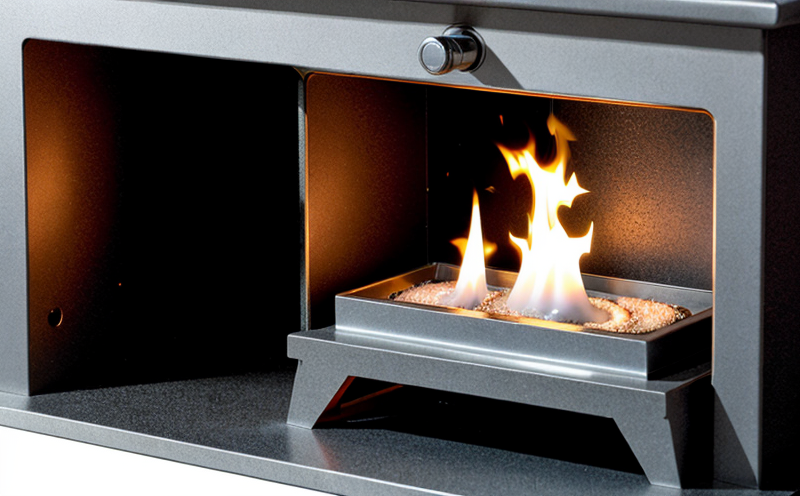Flame Spread Testing of Fire-Retardant Coatings
Flame spread testing is a critical component in ensuring fire safety standards are met. This service, specifically designed for fire-retardant coatings, evaluates the combustibility and flame spread characteristics of materials used in various sectors like construction, automotive, and electronics. The purpose of this test is to quantify how quickly flames will travel across a surface or coating under controlled conditions. This information is essential for material selection and compliance with international safety standards.
The testing process involves exposing the specimen to a standard heat source in a specially designed chamber. During the test, various parameters are closely monitored including temperature rise rates, flame length, and extinguishment time. These metrics provide valuable insights into the materials' resistance to ignition and their ability to suppress flames once they have been extinguished.
For accurate and reliable results, it is crucial that specimens are prepared according to specific guidelines. This includes ensuring uniform thickness, avoiding air bubbles or impurities, and adhering to specified dimensions. The choice of heat source also plays a significant role in the outcome as different sources may yield varying results due to differences in energy output.
The testing apparatus used for flame spread testing is highly sophisticated and designed to mimic real-world fire scenarios while maintaining strict control over variables like temperature, humidity, and airflow. Compliance with international standards such as ASTM E84-21 or EN 13501-1 ensures consistency across laboratories worldwide.
Once the test concludes, detailed reports are generated summarizing all findings including visual images of the flame spread pattern, numerical data on flame length and extinguishment time, and comparisons against industry benchmarks. These reports serve as important reference documents for quality assurance teams and regulatory bodies alike.
To summarize, flame spread testing is more than just a compliance requirement; it's an essential tool in developing safer products by identifying potential hazards early in the design phase. By leveraging this service, manufacturers can enhance product performance while meeting stringent safety regulations across diverse industries.
Benefits
- Avoids costly recalls and legal disputes by ensuring compliance with fire safety regulations.
- Promotes innovation through deeper understanding of material behavior under fire conditions.
- Enhances brand reputation among consumers who prioritize product safety.
- Reduces insurance premiums due to lower risk profiles associated with safer products.
- Facilitates easier market entry into countries with stringent fire safety requirements.
These benefits underscore why flame spread testing is indispensable for any organization committed to delivering superior quality and adhering to global standards.
Customer Impact and Satisfaction
Our customers in the construction, automotive, and electronics sectors benefit significantly from our flame spread testing services. By providing accurate data on material performance during fire events, we help them make informed decisions about product development and selection.
We work closely with quality managers and compliance officers to ensure that every test conducted aligns perfectly with their needs. Our service not only meets but often exceeds the expectations set by international standards like ASTM E84-21 or EN 13501-1, thereby fostering trust between us and our clients.
Our commitment extends beyond mere compliance; it includes proactive advice aimed at improving product design to enhance overall safety. This partnership approach ensures that our customers remain satisfied with the quality of service provided while also seeing tangible improvements in their products' performance metrics.
International Acceptance and Recognition
The importance of flame spread testing cannot be overstated, especially when considering its role in international standards. ASTM E84-21 and EN 13501-1 are widely recognized frameworks that establish criteria for assessing the fire hazard posed by materials used in construction and other applications.
Our laboratory adheres strictly to these guidelines during every test conducted, guaranteeing consistency and reliability across borders. We understand that different regions have varying requirements based on local regulations, so we tailor our services accordingly without compromising quality or accuracy.
The acceptance of our testing results by regulatory bodies worldwide further reinforces the credibility of our service. This recognition translates into greater confidence among clients who rely on us for reliable data supporting their compliance efforts.





